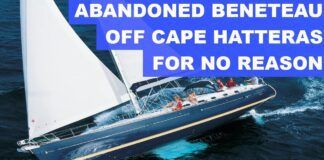Many years ago, when I was shopping for a boat to sail around the world, I sought out wiser sailors for advice. A recent college graduate, I had a ridiculously low budget but lucked into finding a boat that appeared fit for the task. It was a 32-foot gaff-rigged William Atkin ketch, a double ended Thistle design based on the Colin Archer lifeboats.
This shrunken down Norwegian rescue boat was a close cousin to other famous circumnavigators such as Vito Dumas Lehg II, and Suhaili, the boat Robin Knox Johnston sailed to victory in the first Golden Globe Around the World Race in 1968. In the late 1960s, a near copy of the Thistle design first emerged as Kendall 32-which eventually became the Westsail 32. Then, as now, it was regarded as a stout though sluggish sea boat.
Despite many critics who found fault in Toscas archaic design, I was inspired by something Knox Johnston had said regarding Suhaili (as I paraphrase here) that such a boat could take almost anyone around the world.
As it turns out, circling the globe non-stop in a boat like Suhaili is more like a 50/50 proposition. This summer 16 sailors set out in the 50th Anniversary Golden Globe Race, a retro race which sought to recreate the circumstances of the original race using older production boats with dimensions similar to Suhaili. In a nut shell, the race is a poor and patient sailors Vendee Globe.
At the time of publication, only seven of the original 12 entrants remain in the race. Two of them have rounded Cape Horn and are homeward bound to England. Five-time circumnavigator 73-year-old Jean-Luc Van Den Heede is in the lead. Mark Slats, a 41-year-old Dutchman who has already circumnavigated once and rowed solo across the Atlantic, is about 1,000 miles behind him.
The biographies of the remaining competitors in the Golden Globe seem to reinforce the underlying message in this months lead article A Spotlight on Seamanship- a sound, well-equipped vessel is a big step toward eliminating risk, but it is no substitute for experience.
As Naranjo succinctly puts it, one of the greatest risks when proposing an ambitious voyage is the tendency to confuse luck with skill. When you compare Naranjos proposed curriculum for offshore sailors and the backgrounds of the remaining skippers in the Golden Globe redux, you can see how each of the remaining racers have a healthy dose of continuous experience, physical fitness, and sea sense.
And in case you had any misgivings that a faster, tech-equipped boat would greatly improve the odds of an uneventful ocean passage, you might consider the outcome in this years Route du Rhum Transatlantic Race, from which 9 of 21 competitors sailing high-tech fleet-footed racers withdrew.
Yes, Ill take luck over skill any day-but Im not counting on it to carry me on the next ocean passage.






































